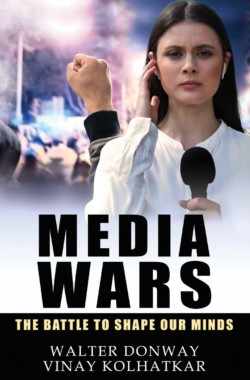NYC is the U.S. Epicenter of the Coronavirus. What a Coincidence!
New York City, March 28—As the novel strain of coronavirus follows its deadly trajectory through the world and as the United States approaches its peak virulence, a striking anomaly is emergence of New York City as the “epicenter” of infection. Some say “world” epicenter, some say “national”—both apply—but the statistics tell the story. About 40 percent of new U.S. cases are occurring right now in New York City.
Cuomo has seized the pandemic as his golden opportunity to make a bid for presidential politics.
This presents both a problem and an opportunity for New York politicians. New York State governor Andrew Cuomo has seized the pandemic as his golden opportunity to make a bid for presidential politics. No public report he makes on the pandemic is without an attack on President’s Trump’s failures, shortcomings, and incompetence. Cuomo is striving to claim the title of national spokesman for the emergency; from a decades-old family of politicians, he is aware of political opportunity.
The problem is that New York City has been propelled to the national “hot spot” of the viral crisis. Someone, after all, had to notice. And when they did, Gov. Cuomo had an answer: New York City and State are the epicenter of viral infection because they are the “most welcoming” city and state in the union. That’s right. Immigrants, tourists, business travelers have imported the virus into the city. And they did so undetected. Cuomo opines that the virus took hold in the city long before anyone was aware.
In fact, there is not a shred of evidence for that hypothesis to explain the truly unique position of New York City as the national and (currently) international hot spot of the virus. None.
What is universally agreed is that the key to combating the virus is social distancing: the simple response to the way the virus spreads through droplets from coughs or sneezes within a radius of about three feet. Secondarily, the virus survives for a longer time on surfaces such as doorknobs, leading to the high-priority importance of hand washing and avoiding putting hands anywhere near your nose, mouth, or eyes.
But all these strategies depend upon the safety of staying home.
Social distancing. The response to that imperative has been to require people to stay at home, avoid social gatherings, “self-quarantine,” “self-isolate.” But all these strategies depend upon the safety of staying home. Think about that. You want to avoid social contact and the answer is to stay at home.
But, of course, there are people at home. What about distancing from them? Well, that sort of depends upon the size of your home. It is literally a calculation: how many people per square foot where you live? That is the calculus of social distancing at home.
Now, return to the challenge of understanding New York City as the epicenter of the virus.
New York City, as measured by housing space per person, is America’s most crowded city.
New York City, as measured by housing space per person, is America’s most crowded city. And the cause of that intense residential crowding is city and state housing policies stretching back to WWII. These have been policies of city and state governments committed to economic intervention and regulation to make housing “affordable,” to “protect unions,” to “protect landmarks,” to promote “public space,” to advance environmental goals …
And the result is the most cramped and unaffordable housing in America. And in that cramped space for some eight million New Yorkers lies the city’s vulnerability to the coronavirus—a vulnerability to infections that spread in intensely crowded conditions—even when you issue draconian dictates requiring everyone to “stay at home.”
None of this is the slightest surprise to New Yorkers. I have lived in the city since 1971, watching rents rise to an average of $2,800 for a one-bedroom rental and $1.0 million to purchase a “decent” one-bed apartment. Every New Yorker has watched this happen. But the city is the most ideologically left-liberal city in America. It seems futile to challenge rent control/rent stabilization, skyrocketing taxes, draconian zoning regulations of every kind, byzantine permitting for ‘landmarks’ and everything else, construction unions out of control, and public housing—the solutions that have made things worse.
Here is the briefest rundown on the left-liberal ideological principles and policies that have left New York City spread-eagled, utterly vulnerable to violation by the new epidemic. It was inevitable, an accident waiting to happen.
Understand that almost every university, government agency, foundation, and think tank in New York City has a left-liberal bent, tending to support and further these housing policies. I quote here a selection of the few independent voices, chief among them the distinguished Manhattan Institute for Policy Research.
“New York City has the highest “Broom Closet” Index, or your likelihood of living in a small, cramped space. … The index combines United States Census Bureau data on median housing unit size (combined house and apartment), median square foot of housing space per individual, median monthly housing costs, and cost of living as determined by the Council for Community and Economic Research. According to the Index, the median square footage a person will have in NYC is only 575. The cost of living is also the highest.” Homeadvison.com
- New York City is the only city to continue rent control/rent stabilization ever since WWII, forcing hundreds of thousands of landlords to abandon apartments because of forced losses, rents that literally do not cover taxes. New York State recently strengthened and extended its regulations on rent control indefinitely. A 2020 report of the Manhattan Institute for Policy Research said: “Rent control … acts to restrict the supply of housing, transferring wealth to current tenants at the expense of future and market-rate tenants.
New York City is the only city to continue rent control/rent stabilization ever since WWII, forcing hundreds of thousands of landlords to abandon apartments.
Insiders—those living in rent-protected units—generally win at the expense of outsiders … to resist gentrification, rent control leads to the decay of the buildings, as owners have less revenue to spend on maintenance and improvements. Regulating rents, in short, does more harm than good overall.”
And: “Rent control discourages new units from being brought to the market; it also encourages owners of rent-controlled housing to convert their units to for-sale condominiums, which are not subject to price controls and thus have greater profit potential. These condo conversions further contract the housing supply and put upward pressure on noncontrolled rents, all while pushing out renters in favor of homeowners (usually with higher incomes).”
- Skyhigh taxes at every level and of every kind: state income, county income, city income, state sales, city sales, real estate, excise, and on and on have a huge impact on the construction industry. A story in the New York Post began: “New York has once again landed a prize it doesn’t want—the highest tax burden in the nation. … Another study, this one conducted by the financial news site 24/7 Wall Street, found that New Yorkers on average paid 12.7 percent of their income in state and local taxes—a larger percentage than residents of any other state.”
- Draconian zoning regulations halt building, limit building, make construction super expensive. In a report on city housing costs, the Manhattan Institute for Policy Research reported: “… the difference between pre-1980 Manhattan and today is increased regulatory constraints on housing supply. From 1980 onwards, there has been a marked drop off in the number of new apartments in Manhattan—despite a growing economy, robust demand, and escalating prices. By restricting the supply of new apartments, these regulations exert a “zoning tax” on housing prices that is responsible for much of the high cost of housing in Manhattan.”
- Mind-boggling bureaucracy for building requirements and regulations necessitating “contacts” at every level and payoffs. As early as 2004, a Manhattan Institute study reported: “While the city’s consideration of a less-cumbersome building code and piecemeal revisions of its antiquated zoning law provide glimmers of hope, New York is still an expensive and unfriendly place to build new homes. The result is a “housing gap”—the difference between the amount of housing needed for the city’s growing population and the amount available.”
“By my estimates, New York’s housing gap is now between 111,000 and 370,000 units. Without question, the gap is growing: The city’s latest Housing and Vacancy Survey found that, from 1999 to 2002, housing production only added 43,500 new units—even as the Census found that the city’s household population grew by 137,100.”
More recently, the Hoover Institution focused on a single aspect of the NYC real estate construction puzzle: “Today, about 27 percent of buildings in Manhattan have the dubious honor of landmark status—dubious because of the enormous costs associated with that designation. …
“The purpose of the law was to supposedly preserve New York City’s great and historic buildings from the crass utilitarian dictates of the marketplace. … the Commission operates to regulate everything from the process by which landmarks are designated to the extensive restrictions on the ability of their owners to make any exterior or interior changes in their structures, down to the last ventilation duct, awning, window opening, and fire escape. The simplest way to think about landmark designation is that it puts the city in the position of part owner of the affected buildings, which then lets it decide how these buildings are maintained and altered, without having to bear anything close to the full financial burden of its decisions.”
- Union and safety regulations far beyond the average for cities, increasing costs. Cityandstate. Com recently wrote: “The Second Avenue Subway cost about eight times as much as recent subway extensions in Berlin and Paris. … One reason for the high costs and extra time has become obvious in the past few years: inefficient work practices. As this author noted nearly three years ago, because of inefficient union work rules, New York transit projects often require 25 workers on a tunnel-boring machine, when as few as five are necessary in western Europe. When a tunnel worker in New York makes $118.85 per hour in wages and benefits, as required by New York’s state prevailing wage law, that’s a lot of wasted money.
“There’s nothing wrong, of course, with paying a highly skilled construction worker a wage that’s sufficient to live on in an expensive city. There are just often too many such workers for a particular job.”
- Extensive low-quality, crowded public housing.
NYC is the U.S. epicenter of the coronavirus because it is the U.S. epicenter of left-liberal economic intervention that in every possible way has increased the cost and decreased the pace of building ordinary housing for ordinary people.
Cuomo and De Blasio and their leftist predecessors bear the chief responsibility for the city’s vulnerability to this tragedy.
The result is a city among the most crowded anywhere in its housing. And, of course, that makes “social distancing” EVEN AT HOME far less effective.
Gov. Cuomo and Mayor De Blasio have supported and furthered every possible policy described above. They and their leftist Democratic Party predecessors bear the chief responsibility for the city’s vulnerability to this tragedy.
« Tackling the Wuhan Pandemic Without Wrecking the Economy Five Insights from Observing the Coronavirus Pandemic »










